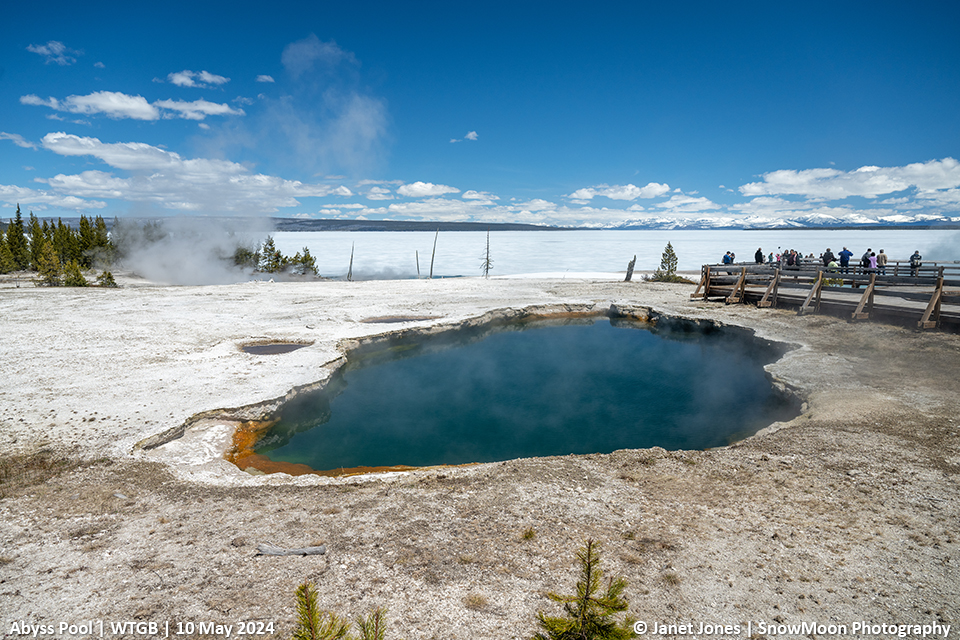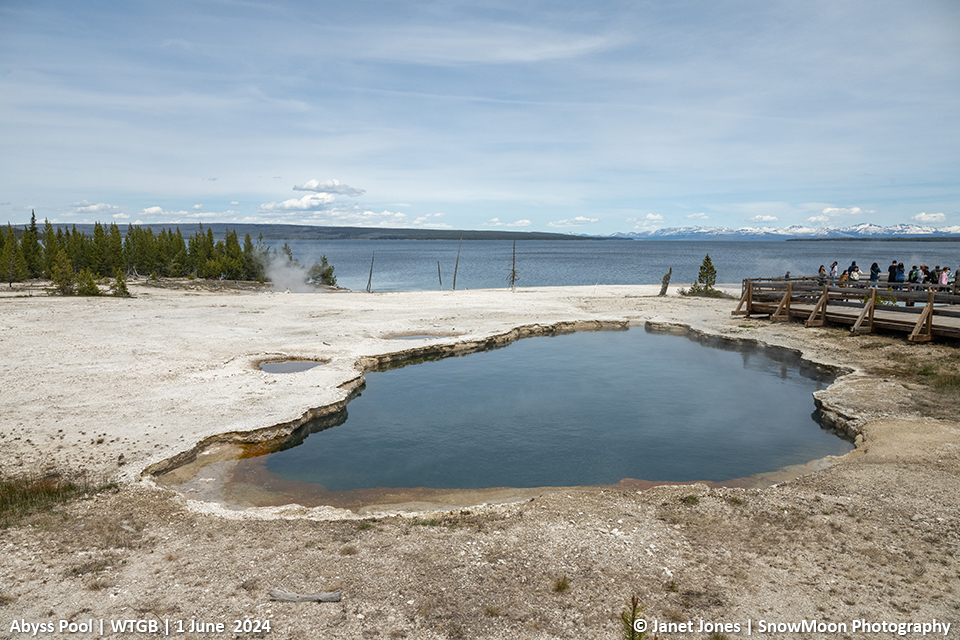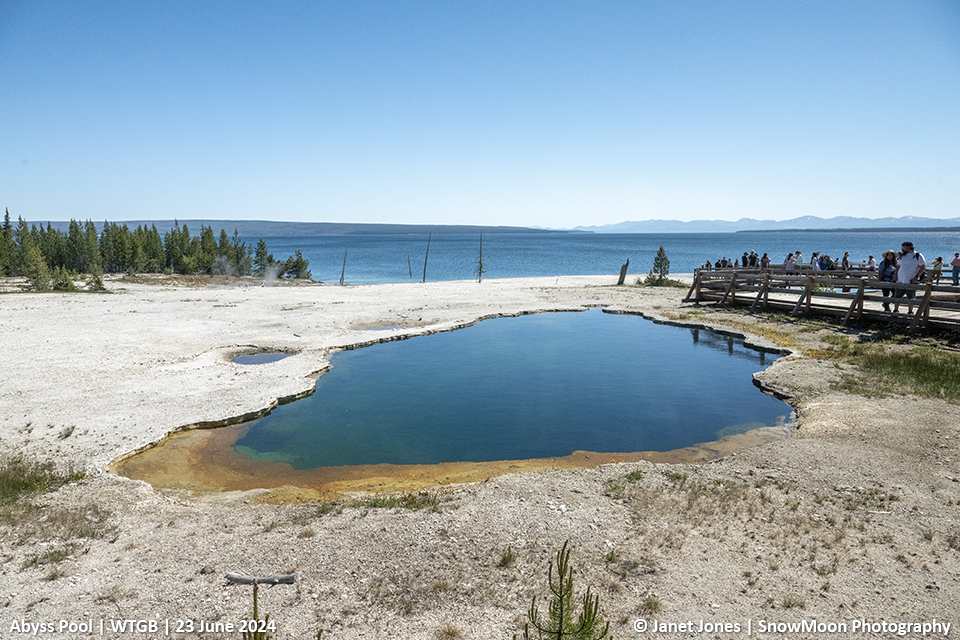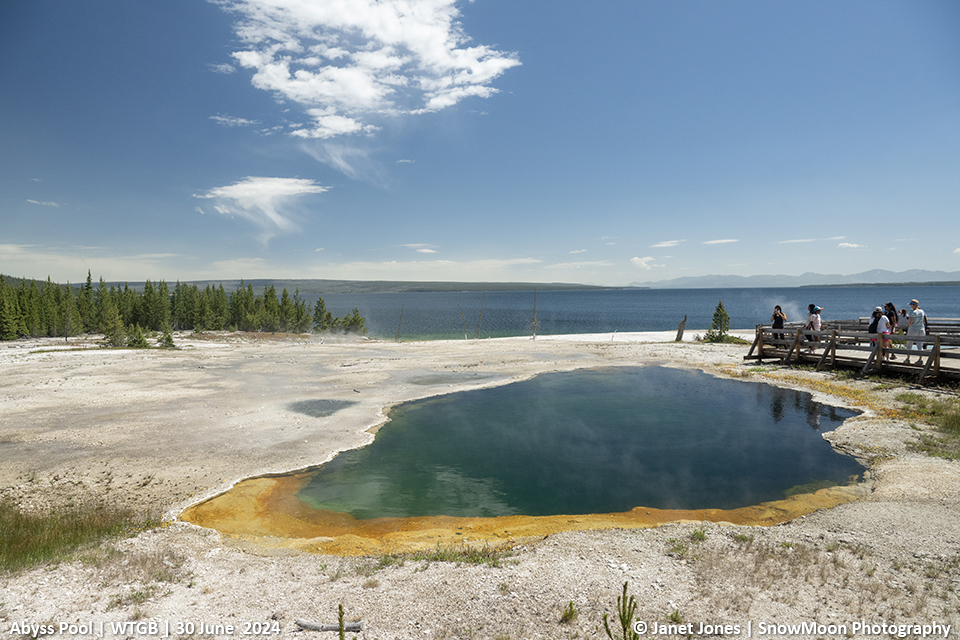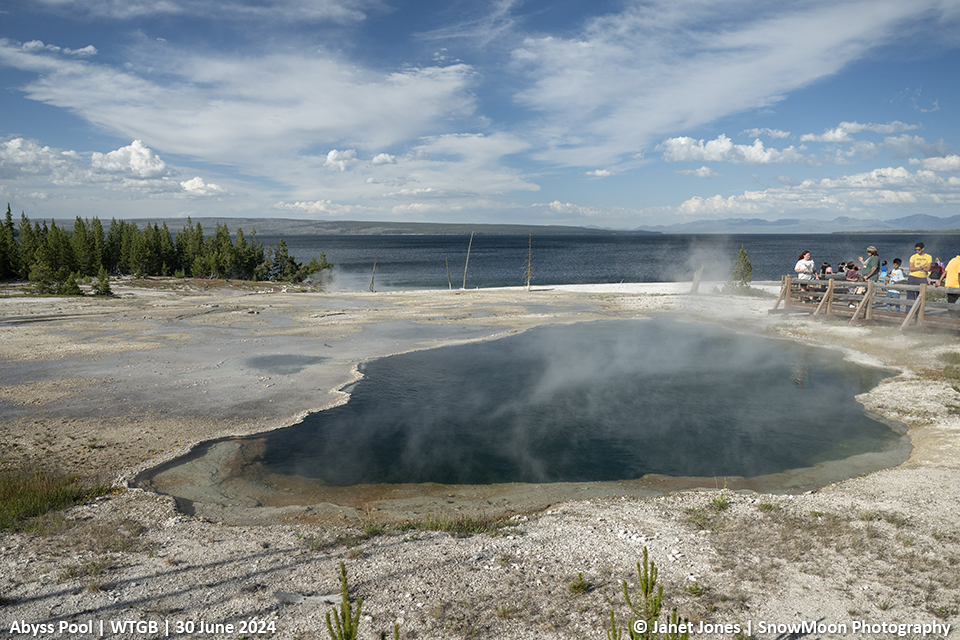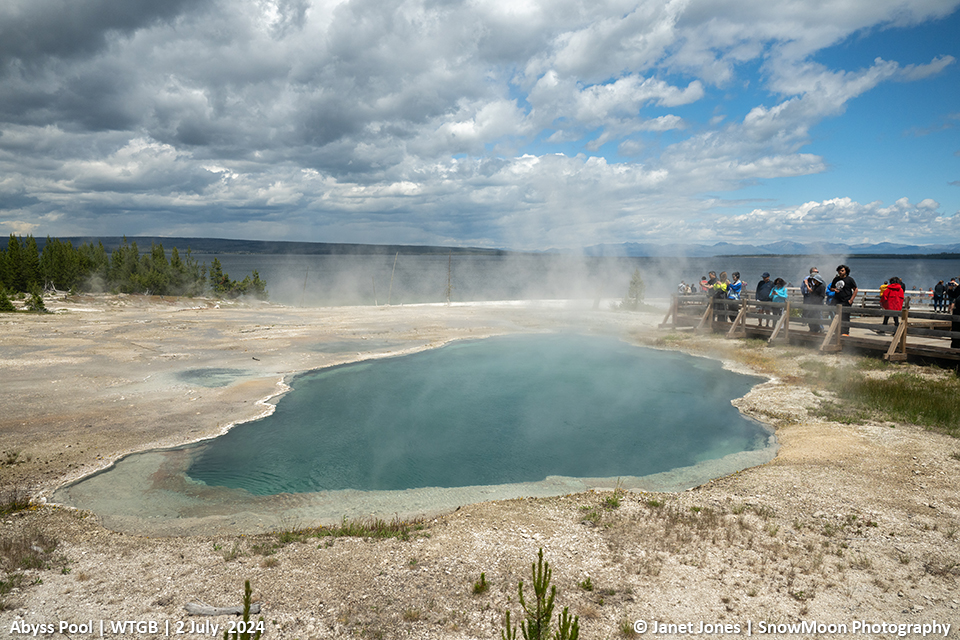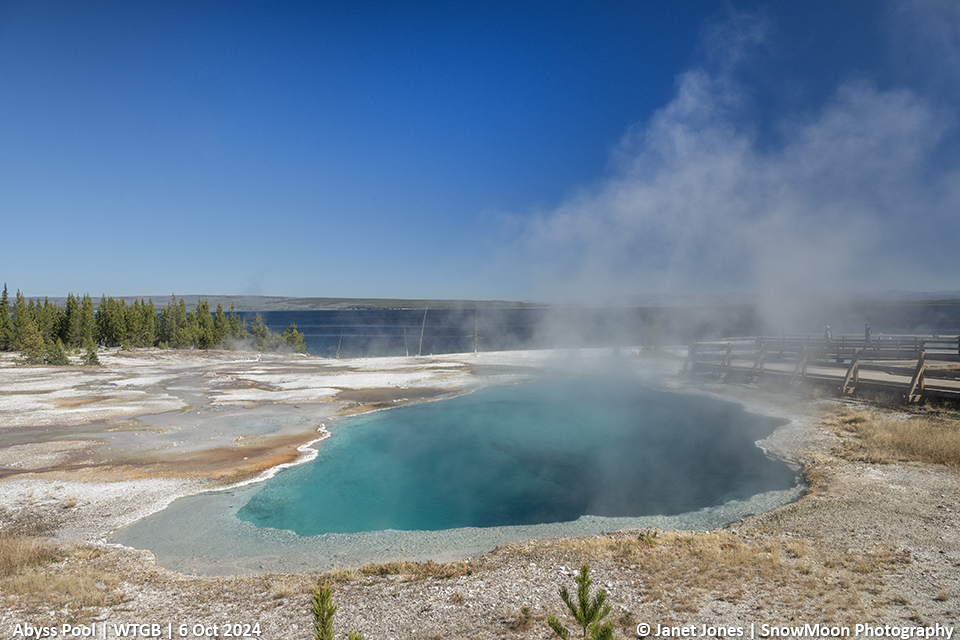Abyss Pool Hotter Than in Over 30 Years
Over at West Thumb, Abyss Pool started heating up this summer. This pool has been quiet since its last active phase over 30 years ago when it erupted often from September 1991 through May 1992. At first, the eruptions came every few days or weeks but sped up to happen every 2-3 hours. The eruptions at first reached up to around 100 feet in height, but when occurring more often, reached about 50 feet. Knowing this background information and seeing it hotter than in at least 30 years, rangers and visitors alike have kept a closer eye on this area.
Heating up in 2024
In May, and for the past couple of years, Abyss has been almost black in color due to being “cool” enough (still hot enough to be dangerous) for a thick layer of dark orange microbes to grow on the crater’s surface. As for the color, if you mix dark orange with the normal blue color of water, you get that inky green/nearly black color. In addition, the water level has been a foot or two below overflow.
At the beginning of June, the water level began to rise and eventually overflow. When it started to overflow, there could have been a significant surge, as the area downhill of Abyss had been flooded. However, it is unlikely that an eruption occurred, as the grass near the pool had not been killed. From that point on this summer, chunks of the microbe mats on the crater’s sides began to be killed and sloughed off in chunks. These chunks floated in the water for many weeks, telling us that the heating had likely stabilized.
On June 30, this author visited West Thumb in the morning and evening and saw significant heating. This was noted by the number of microbes that disappeared over seven hours. Bubbling along the edges began.
By August, a noticeable upwelling of water was seen. These show as rings of a smoother water surface. They showed at regular intervals with accompanying bubbles in the center area of the pool. Based on observations from the past active phase, seeing bubbles rising in the center was a sign that it was close to a possible eruption.
On August 17, a ranger noticed water surging at Abyss up to six to eight inches. Again, that was a promising sign – a push or a try at an eruption. However, no similar surges, increased bubbles, or boiling from the center of the pool have been seen…yet.
Currently
As of this article’s writing, Abyss Pool is still hot and has many spots along the edge where bubbles consistently rise. The beginning of the active phase in 1991 happened in the fall. There is the idea (probably not quite a theory yet) that the lower water levels in the fall allow for interesting changes in geyser basins.
So, perhaps Abyss still has a chance to enter another active phase and may just be waiting for the park to close for the summer season. Or maybe it will cool off again. If you happen to get in on a snowmobile trip and stop by West Thumb, let us know what you see at Abyss. All reports are very welcome.
